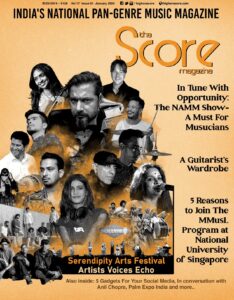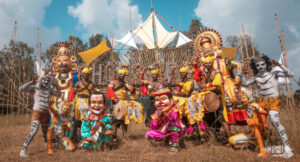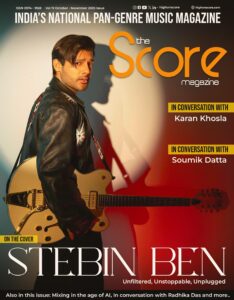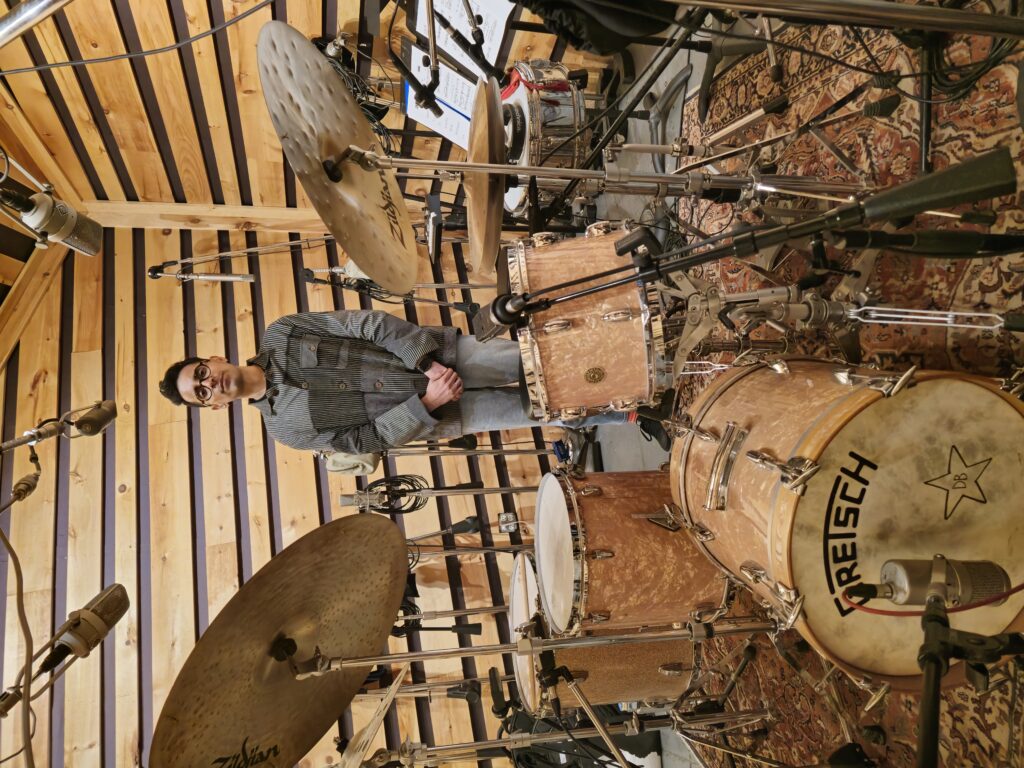- ‘Lajpat Nagar Sometimes’ feels deeply personal—what was the moment or memory that sparked the idea for this track?
A few months before my father passed away, he gave me a couple of old photographs of my grandparents. I always knew that my grandfather was a celebrated writer, artist, and painter within the small Sindhi community back in the 1960s — but what truly sparked the idea for this track was the moment I realized that I now share the same space he once used as his studio in our ancestral home in Lajpat Nagar.
- Your upcoming album Kadahin Milandaasin traces your Sindhi heritage. What was the most surprising or emotional discovery you made while working on it?
Writing an album is like holding a mirror to yourself, and with Kadahin Milandaasin, I had to dig deep — both emotionally and quite literally — through the archives of our family history: old photographs, letters, and interviews I conducted with my uncles and aunts. The most emotional discovery for me was realizing how much I resemble my grandfather, both in personality and artistic outlook. We share a love for photography and international cinema — and for both of us, family comes first.
- You mentioned that Lajpat Nagar is a mix of cultures, much like your music. How do you translate the essence of this neighbourhood into sound?
Lajpat Nagar continues to see an influx of migrants from different parts of India and the world. Its essence lies in a hybrid blend of cultures, histories, and traditions that make it truly unique. I feel my music reflects that same spirit — it blends traditional jazz, improvised and acoustic elements with electronic abstraction. In the end, it becomes a hybrid style of music that doesn’t conform to any one genre or category, much like Lajpat Nagar itself, which feels like a world of its own.
- The trumpet in ‘Lajpat Nagar Sometimes’ beautifully conveys a sense of longing. How did you approach the arrangement to reflect both nostalgia and resilience?
This album really pushed my limits as a composer and arranger because I was trying to express something deeply personal — grief and longing. I’ve been playing with this band for about eight years now, and while writing for them has become more intuitive over time, it still presents its challenges. That said, there’s always a moment in the writing process when the gears shift — when I put on the hat of a sonic storyteller. That’s when I’m able to let go of preconceived notions about what an instrument should play, or whether a part must be specifically written out.
This is also where the band comes in. There’s a lot of room within our group for each of us to bring our own artistic voice into the music. For me, the parts I wrote for the trumpet — with its sonority — evoke nostalgia and an old-world feeling in the melodic lines. The guitar, on the other hand, embodies resilience and grit. And the unison piano/synth melodies bring in a vintage warmth that ties it all together.
- Your grandfather’s studio is now your creative space. How does working in that same environment influence your music and your connection to your roots?
Our ancestral home in Lajpat Nagar holds a very special place in my heart, and I feel incredibly fortunate to share the same space that my grandfather once used as his studio to paint (rebuilt and reconstructed in the 1990s by my father). There’s a unique vibe and energy in the space that I feel is particularly conducive to my work. I also grew up in this house, so there’s a comfort and familiarity that allows me to take artistic and creative risks — risks I’m not sure another space would allow me to.
The context of Lajpat Nagar — as a refugee colony — continues to shape my artistic voice and choices. In many ways, this space feels like a gateway to my Sindhi roots, a bridge between memory, identity, and imagination.
- From Sindhi folk music to New York jazz, your influences are vast. What are some specific musical elements from each tradition that you wanted to highlight on this record?
From the world of jazz and improvised music, I’ve definitely borrowed the sound of acoustic instruments, aspects of form and harmony, a cyclic improvisational approach, and even elements of the production. On the other hand, from Sindhi folk music and other genres I love, there’s a sense of minimalism, moments of free improvisation — almost avant-garde in nature — and intro sections that feel similar to an alaap, along with irregular forms and structures. Some of the drum grooves are also inspired by traditional dholak rhythms found in folk styles.
That said, all these influences are quite subtle — nothing is overtly present in the music. You really have to dig a little deeper to catch those references. The only clearly prominent musical element is my vocal line on the title track Kadahin Milandaasin, which unfolds as a repeated chant, much like what you’d hear in Sufi music.
- How has your relationship with your Sindhi identity evolved over the years, and how does Kadahin Milandaasin reflect that journey?
The Sindhi community is complex and hybrid, with multiple layers and dimensions. Perhaps that’s why it has taken me all these years to finally discover my own connection to its culture, art, music, and literature — through a deeply personal lens. This journey began with my grandfather’s modernist paintings and photographs from the 1960s, which offered an entry point into a cultural world I had inherited but not yet fully understood.
More recently, it has been enriched by my late father, who introduced me to a vast repository of Sindhi music and literature. Through both of them, I’ve been able to piece together a sense of identity that feels both inherited and self-discovered. I’ve always been aware of my Sindhi identity, but I feel I’m only just beginning to scratch the surface of my relationship with it — and Kadahin Milandaasin is just the starting point.
- Migration is a central theme in this album. As someone who has travelled and performed globally, how does your music act as a bridge between different cultures?
Migration — whether chosen, forced, or inherited — is deeply woven into my identity. Being part of the Sindhi community, where displacement and diaspora are common threads, has always made me curious about belonging and home. In many ways, my music acts as a bridge between cultures by holding space for that complexity — where tradition meets improvisation, and local stories are told through global languages like jazz and electronic soundscapes.
Performing globally has allowed me to engage with audiences who bring their own contexts to the music. And because the themes I explore — loss, memory, identity, resilience — are universal, I find that the music often transcends its specific cultural references to become a shared emotional experience.
- Your band members in Dharma come from different cultural backgrounds. What was the dynamic like in bringing together artists with diverse backgrounds to create this deeply personal album?
One of the most beautiful things about working with the Dharma band is how each of us brings our own cultural lens, musical vocabulary, and lived experience into the process. While Kadahin Milandaasin is deeply personal and rooted in my Sindhi heritage, the making of it was a collective journey. There’s a lot of trust in our process — we’ve been playing together for many years, so there’s an unspoken understanding and respect for one another’s artistic voice. That diversity didn’t feel like a challenge; it felt like an extension of the story I was trying to tell. Each musician brought their own shade of emotion and interpretation, allowing the music to evolve beyond me and into something richer, layered, and multidimensional.
- 10.If someone unfamiliar with your music were to start with ‘Lajpat Nagar Sometimes,’ what do you hope they take away from it — both musically and emotionally?
Lajpat Nagar Sometimes is a sonic reflection on grief, memory, and the spaces we inherit. Musically, I hope listeners notice the balance between structure and openness—the way the composition moves between restraint and release, echoing the emotional journey I was going through while writing it.
Emotionally, I’d like them to feel a sense of longing, but also warmth — like flipping through an old photo album or walking through a familiar street after years away. It’s about personal loss, yes, but also about the resilience that comes from carrying our stories forward, however fragmented or unresolved they may be.








